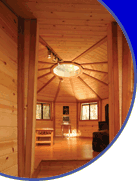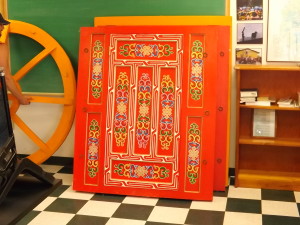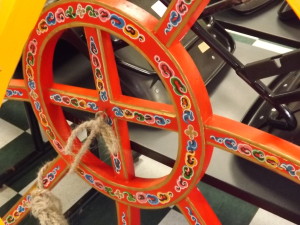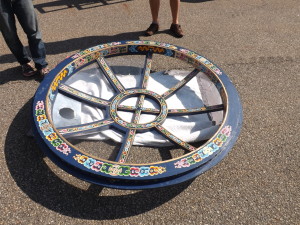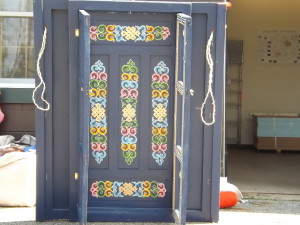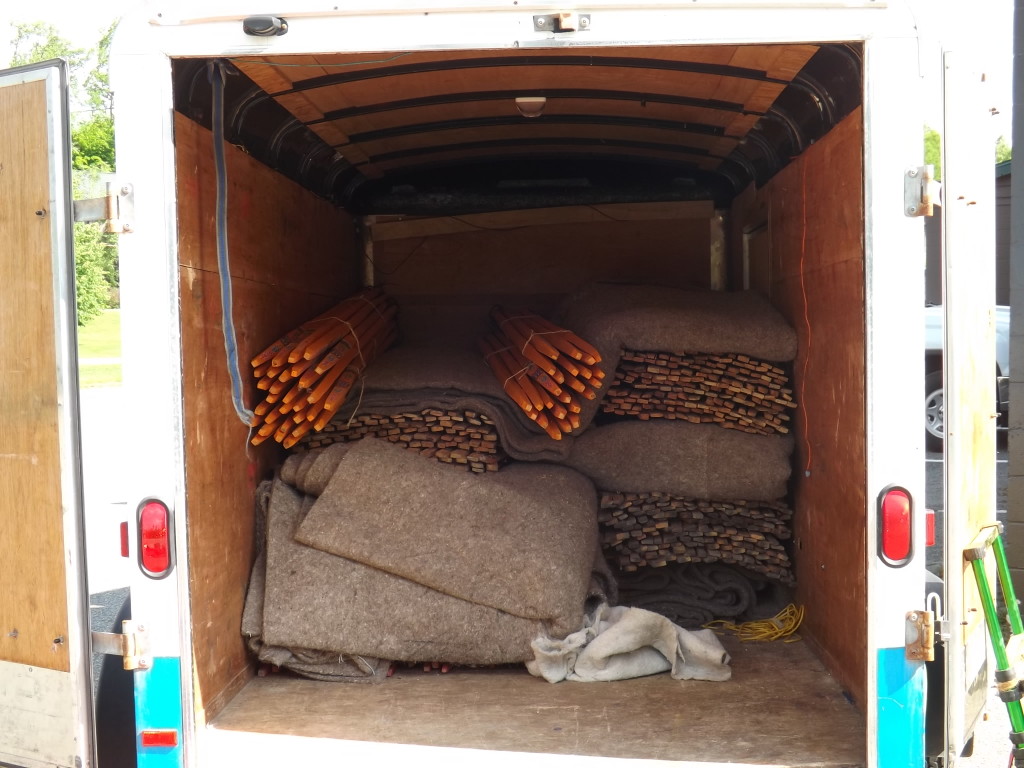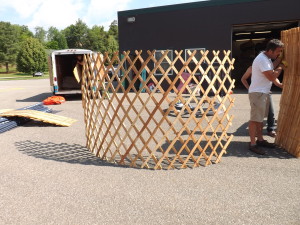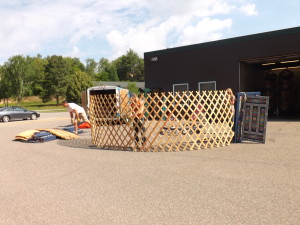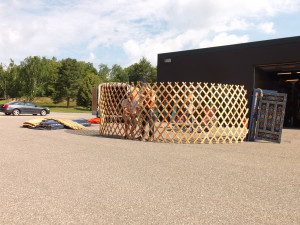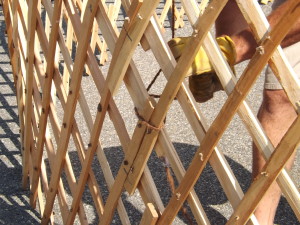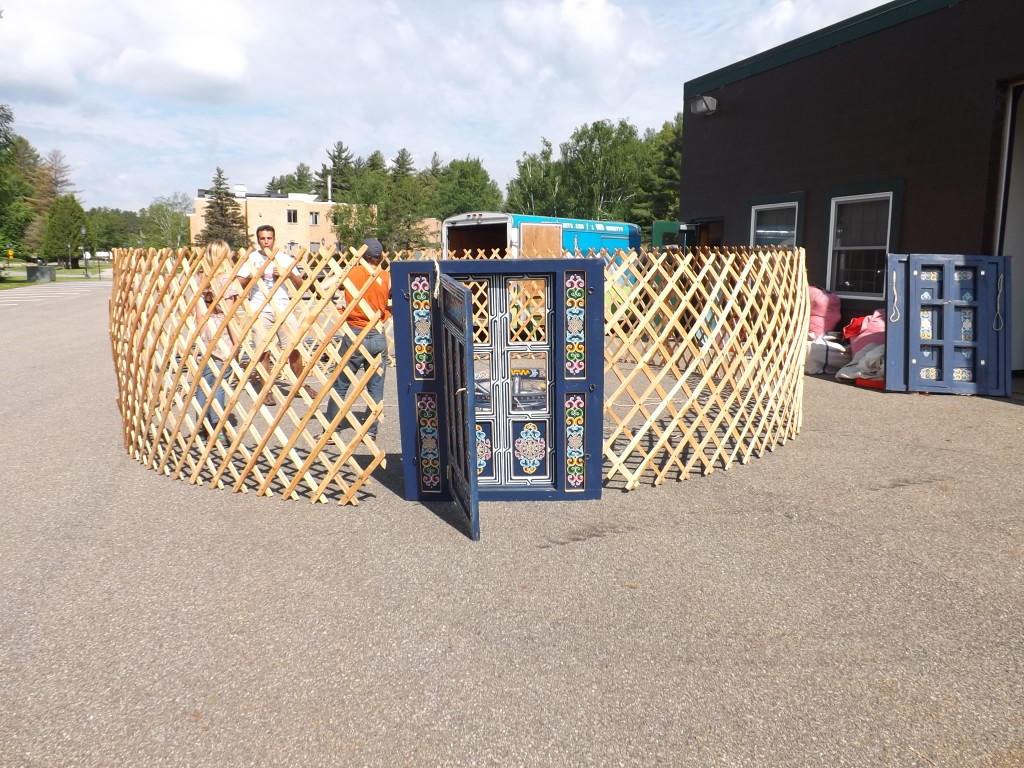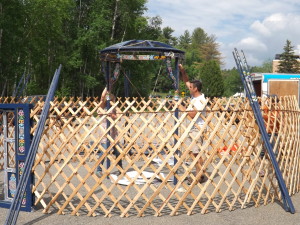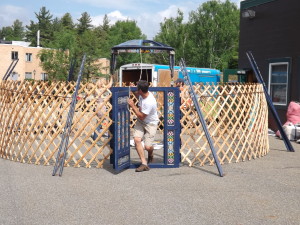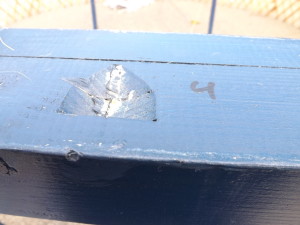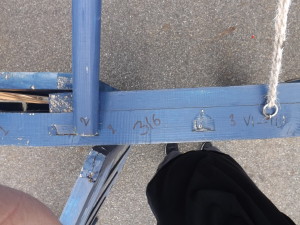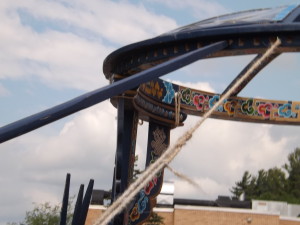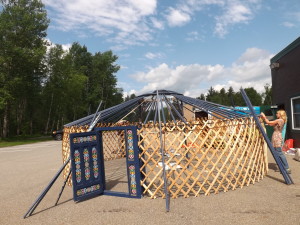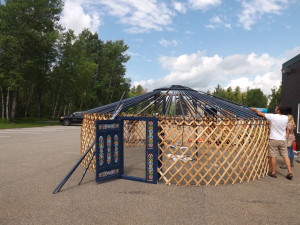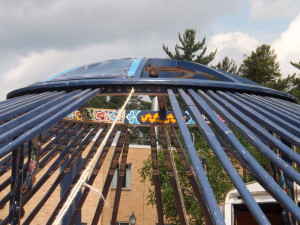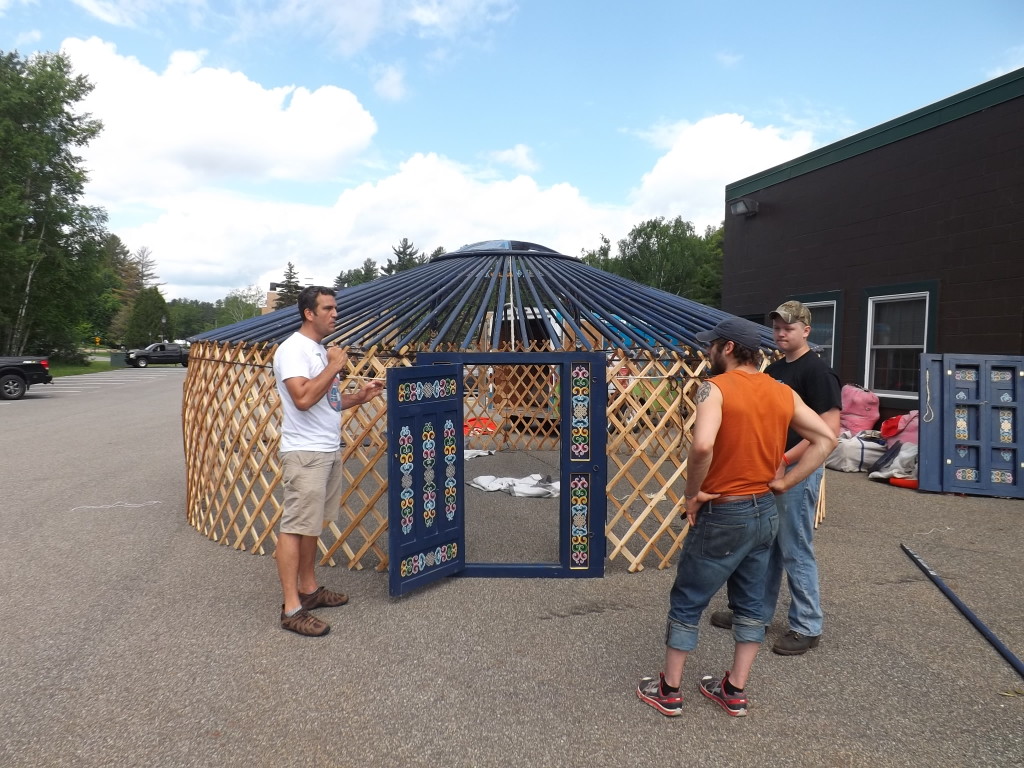On June 18th, 2015, we had the pleasure of meeting up with Yves Ballenegger from Groovy Yurts as they delivered three yurts to Paul Smiths College which is located near Lake Placid, NY. Bethany Garretson, a teacher at Paul Smiths, will be overseeing an off-grid project at the college where eight students will live in three yurts for the Fall semester. The students will be doing this to document the experience and for some class credit. At the time of delivery, the permitting process was not yet complete so the project for that day was to erect and disassemble one yurt for educational purposes so they could do it themselves once ready.
Even though I had never been to Paul Smiths before, it didn’t take long to find Yves. Who could miss this?
Years ago, Yves would deliver free school supplies to Mongolia via truck from Switzerland. After a while, he started bringing yurts back with him. They sold quickly. Yves now deals exclusively in authentic, hand made yurts produced in Northern Mongolia. He does business with a couple of local Mongolian families and travels there frequently every year. He has been working with the same community for about ten years. While there are other yurt companies offering imported yurts, quality control is always an issue. Yves feels it is important to create a working symbiotic relationship with his partners on an in person basis. Only in this way do you achieve quality, he believes. He falls perfectly into the stereotype of the “quality, quality, quality” demanding Swiss that he is. 🙂
Early on, many importers were bringing in low quality yurts, some which never even survived shipping and this gave traditional yurts a bad reputation. Yves has been working tirelessly to ensure better and better quality each year.
There are many materials that are not allowed to be exported from Mongolia so Yves has also spent a lot of time making sure that not only do they use quality materials, but also the appropriate ones.
The yurts are generally built by the males of the families, while the women do all of the painting and decoration of the structure. As seen in the next few pictures, their skills are masterful.
The wood is tamarack, white pine and other local woods. Traditionally, orange is the color used for yurts in northern Mongolia. They do however offer other colors upon request as you will see.
The Mongolians are a nomadic people, so each piece of the yurt needs to be light enough to be carried by one person. It is amazing that three yurts fit so well in the Groovy Yurts trailer.
After we got everything unloaded, we began putting up the lattice as the first step.
The hand split lattice is connected by using camel rawhide. Each section (or wall) of the yurt are connected using horse hair. The more sections you have, the larger the yurt. These three yurts are six walled. That equates to a yurt that is 21′ in diameter.
The next step is to connect the traditionally South facing door to the lattice. Each door is handmade and unique. This means you usually have to play with the process of attaching it to the lattice each time. After a few minutes, they got it set.
Once the lattice and other parts are temporarily reinforced with some rope, it is time to stand up the toono (center ring). The rafters will be inserted into holes that are carved directly into it.
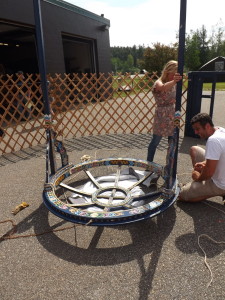
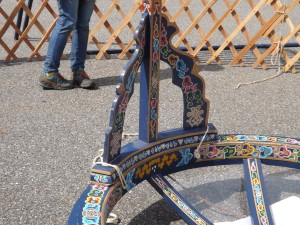
Once standing, the rafters can be inserted.
It is touch and go at this point because you have to be careful not to push and pull on the center ring too much. It can cause the rafters you already put up to fall. The temporary ropes caught any that slipped during this setup. Fortunately the rafters are lightweight so they don’t stand much of a chance of seriously injuring anyone. After a bit of practice, we got this down to a science. 🙂
With 50% of Mongolians living in yurts, it is understandable that they have refined this design to such wonderful levels of simplicity.
This part of the process took maybe, 15-20 minutes to complete. It probably would have went quicker, but Yves was explaining each step to us which was terrific. He really has a passion for yurts and it came out clearly that day!
Here is a pic of the frame being completed. There is still some temporary rope bracing, but that comes off after we put up the fabric.
